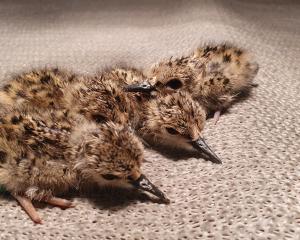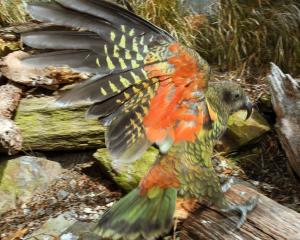Mayor Maureen Pugh received the protesters' petition and said the council would work with the Department of Conservation and the Animal Health Board on alternative methods of possum control, such as trapping and other ground-control meth-ods.
The council has also promised to make the use of 1080 a prohibited activity under its district plan.
"While we don't have any legal authority to act on 1080, we do have an obligation to represent the community," Mrs Pugh told the protesters.
Mr Hutcheson said, when contacted yesterday, alternative ground-control methods would kill even more possums and help keep communities viable.
"We look at it like there's a few bob to be made out of it here. We would do the work for Doc, if asked," Mr Hutcheson said.
Mr Hutcheson is familiar with pesticides through his work as a rabbiter but would like to see 1080 phased out because of concerns held by many people about toxins entering the waterways and the ongoing debate about the likelihood of secondary poisoning.
Mr Hutcheson said the council's input was important at a time when sharp divisions were beginning to emerge.
"The council must be a pretty reasonable powerful voice, I suppose. Obviously, if a regional or district council is behind banning it, it must help."
Meanwhile, this week's aerial 1080 pesticide drop in the Cascade Valley, south of Haast, has been completed.
Doc undertook the project targetting possums and rats on Tuesday, using 10 staff, 25 contractors and nine helicopters.
A total of 43 tonnes of sodium fluoroacetate (1080) was applied over 27,000ha from Cascade River south to the Hope, Gorge, Duncan and Jerry Rivers.
South Westland Doc area manager Jo McPherson said yesterday the final costs were still to come in, but the department was forecasting a total figure of $405,000.
This equated to about $13.80 per hectare, excluding staff planning time, she said.
Doc also undertook a "low sow" trial in conjunction with Landcare Research, covering 7000ha in the block.
This continues previous trials to determine methods of decreasing the quantities of bait while still achieving a good result.
Results of the trial were being closely monitored, Ms McPherson said.
There are 45 areas in the Westland conservancy where pesticide operations are taking place this year.
Of those operations, 29 involve 1080. Most are are north of Hokitika.
Pesticides have already been laid in at least 25 of the 45 listed areas, according to a summary on Doc's website.




